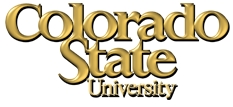

Neural Networks in Computer Graphics
This material is presented to ensure timely dissemination of scholarly and
technical work. Copyright and all rights therein are retained by authors or
by other copyright holders. All persons copying this information are
expected to adhere to the terms and constraints invoked by each author's
copyright. In most cases, these works may not be reposted without the
explicit permission of the copyright holder.
Back to Chuck
Anderson's Home Page
-
Chuck Anderson, CS faculty member,
-
Stew Crawford-Hines, CS graduate student,
- Thomas McCracken, VP of Research, Visible Productions, Fort Collins, CO
- Rick Miranda, Mathematics faculty member,
- Matt Chapman, Mathematics graduate student,
- David Alciatore, Mechanical Engineering faculty member,
Past members:
- Charles Martin, MS graduate in CS,
- Santiago Alvarez, MS graduate in CS.
Back to Contents
This work has been funded by NSF grants
-
National Science Foundation, SBIR Phase II, $398,132,
6/1/99--5/31/01, with T. McCracken, Visible Productions, Inc., Fort
Collins, R. Miranda, Department of Mathematics, CSU, and D. Alciatore, Department of Mechanical Engineering, CSU,
Complete Software System for 3D Surface Modeling of
Anatomy from 2D Sections
- National Science Foundation, SBIR Phase I, $85,596,
1/1/98--6/30/98, with T. McCracken, Visible Productions, Inc., Fort
Collins, R. Miranda, Department of Mathematics, CSU, and D. Alciatore, Department of Mechanical Engineering, CSU, Complete Software System for 3D Surface Modeling of
Anatomy from 2D Sections
- National Science Foundation, SBIR Phase I, $93,210, 1/1/99--6/30/99, with
T. McCracken of Visible Productions, Fort Collins, CO, and R. Miranda,
Department of Mathematics, CSU,
Fast and Accurate NURBS Surfaces from Polygonal Mesh Models of Organic
Structures
and by grants from the Colorado Advanced Software
Institute:
- Colorado Advanced Software Institute, 1/1/99--7/31/99, $39,997,
with T. McCracken of Visible Productions, Fort Collins, CO,
Fast Generation of NURBS Surfaces from Polygonal Mesh Models of Human
Anatomy
- Colorado Advanced Software Institute, 8/97--7/98, $34,411, with
T. McCracken of Visible Productions, Fort Collins, CO,
Semi-automated Boundary Tracing of Medical Images for
Three-Dimensional Model Development
Back to Contents
One of the most tedious jobs in medical image processing is hand-drawing the
boundaries around tissue of interest. We are exploring ways of training
neural networks to duplicate the decisions made by a human anatomist while the
human is tracing boundaries, then letting the neural network complete the
tracing, with corrections from the human when necessary.
Stew Crawford-Hines
completed his Ph.D. dissertation in this area in 2003:
Earlier publications on this approach include:
-
Crawford-Hines, S. and Anderson, C.W. (2000) Learning Expert
Delineations in Biomedical Image Segmentation. In Proceedings of the
Conference on Artificial Neural Networks In Engineering, ANNIE-2000,
St. Louis, Missouri, November 5-8, 2000, pp. 657--662.
-
Crawford-Hines, S., and Anderson, C.W. (1998) Machine Learned Contours to
Assist Boundary Tracing. In Proceedings of the IEEE Southwest Symposium
on Image Analysis and Interpretation, Tucson, AZ, April, 1998.
-
Crawford-Hines, S., and Anderson, C.W. (1997) Neural Nets in Boundary Tracing
Tasks. In Neural Networks for Signal Processing, VII, Proceedings of the
1997 IEEE Workshop, ed. by J. Principe, L. Giles, N. Morgan, and E. Wilson, pp. 207--215.
- S. Crawford-Hines, and C. Anderson.
Interactive Region Bounding with Neural Networks.
Proceedings of NNACIP'94, the IEEE International Workshop on Neural
Networks Applied to Control and Image Processing, 1994, pp. 58--61.
Also see our
examples using medical images.
A prototype, in MATLAB, of a complete system for neural-net-assisted tracing
of region contours and the assembly into 3-dimensional models is described in
these slides
from a talk on
our work. Here is an MS
PowerPoint version.
A final report from our 1997-98
CASI grant is available in gzipped postscript.
Back to Contents
Visible Productions, Inc., of Fort
Collins, CO, produces 3-D human models that are recognized as some of
the most accurate models in the world. Their models currently are
based on meshes of 3-D triangles. Such meshes can be rendered as
smooth surfaces by interpolating color values across a triangular
mesh, but for a number of applications the smooth surface must be
explicitly represented. Clients for Visible Productions' models have
asked for surfaces defined by NURBS (Non-Uniform Rational B-Splines).
This project will develop and implement algorithms for transforming
polygonal meshes into NURBS. This requires a time-intensive,
interative optimization process. We are investigating the use of
neural networks to by-pass a large part of the optimization process.
Our recent projects have been funded by CASI and by an NSF SBIR
grant. Material available from this work includes:
Back to Contents
The Forest Service often needs to visualize a given terrain at various stages
of forest growth. This need, plus the fact that terrain elevation data
is abundant while texture and color data of terrain is not, has led us to the
following study. With the help of Denis
Dean in the Department of Forest Sciences at CSU,
we have trained neural networks to predict the color of a
small area of terrain given only the elevation data:
Back to Contents
One of the most computationally expensive steps in radiosity is the calculation
of the form factors between any two patches in a scene. Building a
neural network approximation to the form factor calculation could drastically
reduce the complexity of this calculation, making real-time
calculation of form factors possible. This has been investigated by Charles Martin in
Back to Contents
Neural Networks in Computer Graphics Research in CS at CSU, Charles
W. Anderson /
anderson@cs.colostate.edu
Copyright © 1998 Charles Anderson



